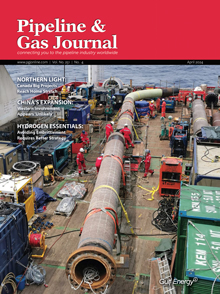Seatrium Supports Energy Security With Successful Delivery of Greece’s First FSRU
(P&GJ) – Seatrium Limited announced the successful delivery of the Floating Storage and Regasification Unit (FSRU) Alexandroupolis, which has completed its near shore testing works and set sail to Greece for final gas commissioning of the regasification system.
The project was successfully delivered to GAS-fifteen Ltd, a wholly-owned subsidiary of GasLog LNG Services with a high safety standard, achieving a remarkable feat of 2.9 million man-hours without any recordable injury and loss-time incident.
As the first FSRU for Greece, the INGS project will become a critical energy gateway, supporting its energy security while advancing the energy transition trajectory of Southeastern Europe. Seatrium’s scope of work for this project includes refurbishment and life extension works, engineering and procurement, fabrication, and installation of a new regasification skid, as well as supporting systems such as boilers, offloading, electrical and automation systems.
When completed, FSRU Alexandroupolis will be deployed in waters some 17 kilometres southwest of the Port of Alexandroupolis, Northern Greece, and will have an overall delivery capacity of approximately 5.5 billion cubic meters per year, with a peak send out of 22 million cubic meters per day. The 155,000-cbm LNG carrier, recently reflagged to the Hellenic Register, is the first FSRU conversion under the Greek Flag for operation in the Thracian Sea. The FSRU will eventually be owned and managed by GASTRADE S.A, a consortium of key players in the wider region’s energy market and will supply the markets of Southeastern European with natural gas.
Compared to a newbuild FSRU, a converted FSRU has a smaller carbon footprint, is more cost-effective, and is faster-to market. Seatrium has an extensive track record in the conversion of vessels. In addition to converting the world’s first FSRU in 2008, Seatrium converted the world’s First Floating Production Storage and Offloading vessel (FPSO) in 1981, and the world’s first floating liquefaction vessel (FLNG) in 2017.
Related News
Related News

- Freeport LNG Plant Runs Near Zero Consumption for Fifth Day
- Biden Administration Buys Oil for Emergency Reserve Above Target Price
- Mexico Seizes Air Liquide's Hydrogen Plant at Pemex Refinery
- Kinder Morgan Declares Force Majeure on West Texas Gas Pipeline After Fire
- Enbridge Picks Contractors for Great Lakes Tunnel Project, Securing Line 5 Pipeline Route
- Pipeline Hydro Test Pressure Determination
- Venezuela Proposes Alternative Payment Plan as Weak Bids Surface in Citgo Auction
- Baker Hughes Wins Contract for Huge Aramco Gas Expansion Project
- Japan Looks at Developing Domestic Pipelines Sector
- Enbridge Picks Contractors for Great Lakes Tunnel Project, Securing Line 5 Pipeline Route





Comments